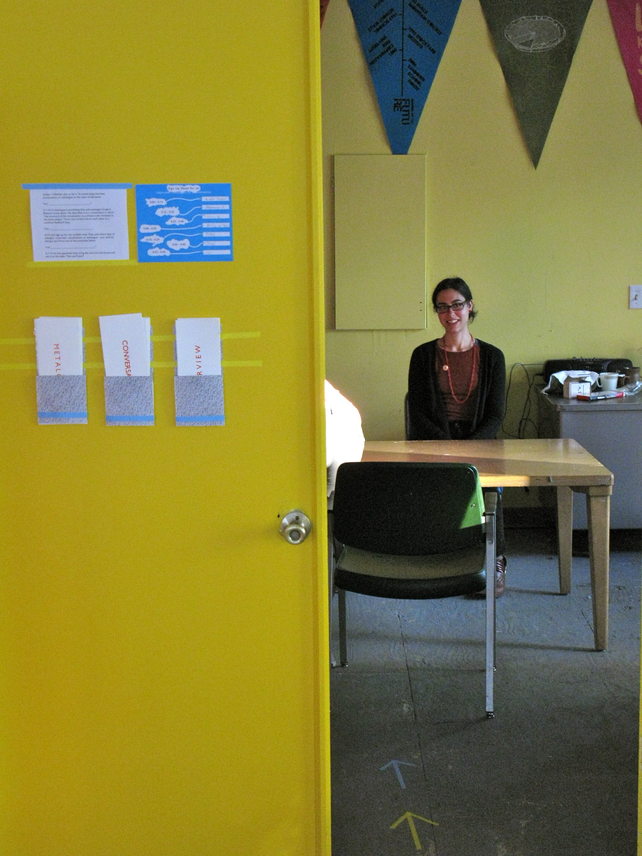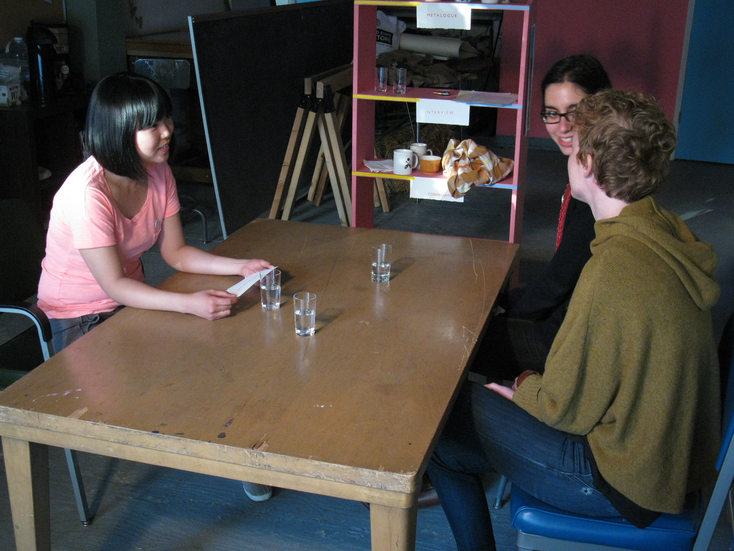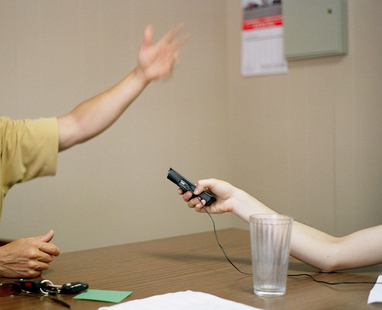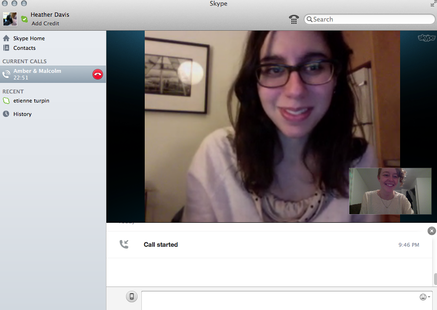A PROJECT FOR OPEN ENGAGEMENT 2012
This project took up our fascination with interviews, conversations, and metalogues as a means to think through problems and questions related to education. This exercise – a mix of performance, lesson, workshop, and study – aimed to consider these various forms of dialogue and the blurry edges that define them both as metaphors and as models for formal and informal art and education.
The choice of education as the topic for the conversations, interviews, and metalogues was riddled with an absurdity and intrigue that echoed the enigmatic nature of a metalogue. Like the metalogue, education is an empty topic. It is a frame through which to encounter other subjects and fields of knowledge. On its own, education is something of a dead end, a ubiquitous form that offers a proliferation of possible meanings and responses and yet simultaneously seems to become hollow when addressed directly. In taking up education and dialogue as both format and content of this project, we attempted to poke around the muddled problem of form – the complex relationship between parts and structures, between individuals and systems, between people and institutions.
This project was structured to engage playfully with these themes, creating an intimate atmosphere of dialogue. Conference participants were invited to pick their preferred mode of engagement: an interview, a conversation, or an attempt at a metalogue. We then conducted a dialogue of fifteen minutes on the subject of education, both formal and informal. These dialogues took place privately in a booth that we called the Dialogue Booth. The hope was that the terms of dialogue and its role in our everyday processes of learning through generous, troublesome, difficult, and mutual exchange would be made more apparent, and be used to think through some of these methods of engagement for the purposes of alternative education.
TO DO
For Open Engagement
- Get cookies
- Get teabags
- Get napkins
- Figure out kettle (electric) and teapot and tea cosy/tea towel
(write to Travis about this) - Sign-up sheet (
prepare &print) - Costumes
- Envelopes (for cards 2 ½ x 7”)
- Waivers (
prepare &print) Blurb- Questions
- Bottles of water (get in Portland)
- Doilies?
- What did we decide about envelopes (three envelopes to put the cards in? what do they do with the cards?)
Amber + Heather: Join us for a 14-minute long interview, conversation, or metalogue. The topic of our dialogue together will be education.
You: __________________________________________?
A+H: A metalogue is something that anthropologist Gregory Bateson wrote about. He described it as a conversation in which ‘the structure of the conversation as a whole is also revealed to the same subject’. Form and content inform each other in a continual feedback loop.
You: ________________________.
A+H: Just sign up for any available time.
Then pick which type of dialogue – interview, conversation, or metalogue – you want by taking a card from one of the envelopes below.
You: ______________________________?
A+H: At the appointed time, bring the card into the booth and set it on the table. Then we’ll start!
The booth created an intimate setting to talk with folks attending the conference about their experiences of education. The interview was in some ways the easiest form: it gave a well-known structure for everyone to follow, a way to interact with a stranger that was formulaic but open. The participant decided whether they would be the interviewer or interviewee; either way, the discussions were interesting and immediately engaging. Conversations often began rather awkwardly; being there to have a conversation seemed slightly at odds with the natural flow of words between folks, but this wasn’t that different from many other moments at a conference or a bus stop where you feel the imperative to strike up a conversation, and where the flow is sometimes stilted or faked until it becomes real. The metalogue struck fear into our hearts. As a conceptual strategy, it seemed the most intriguing – indeed many of our conversations and some of the interviews involved the question ‘what is a metalogue?’ – but its enactment was difficult. It often seemed to lead to unproductive or slightly aggressive situations, the question of form weighing here as a pure restraint, but occasionally, like the moment a kite starts to fly, it would take off bringing an energy and rhythm of its own. The content of these conversations was equally elucidating. Talking in an intimate setting to so many brilliant artists, students, and scholars about their thoughts on education, it felt as if curriculum could be revised and reimagined, the collected insights remaking how we think of the place of education.
The aesthetics of the booth itself – the care with which we approached it, the props that we used depending on the situation (cookies and tea for conversations, notepad and water for interviews, nothing at all for metalogues) – performed our relation to these discursive strategies, revealing our investments and assumptions, but also asking others to perform with us, to perform conviviality or formalism or a playful antagonism. In a sense, we were playing with the power relations between us. The awkwardness of the metalogue heightened the performativity. The participant was often left grasping, and the content paled in comparison to other dialogic forms.











